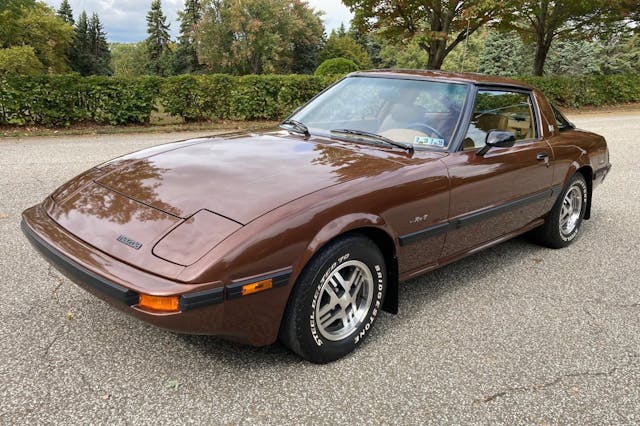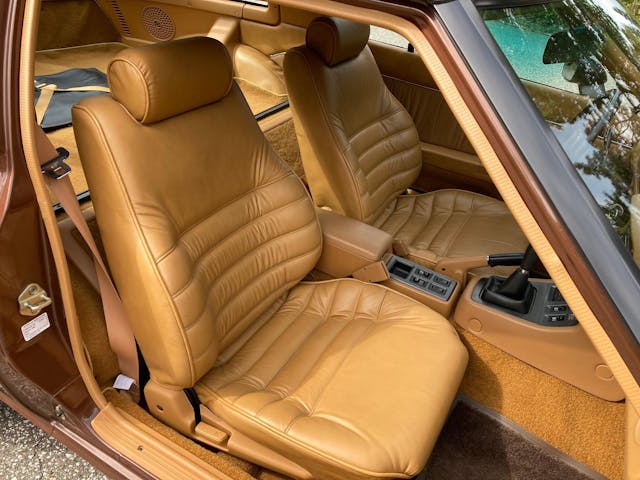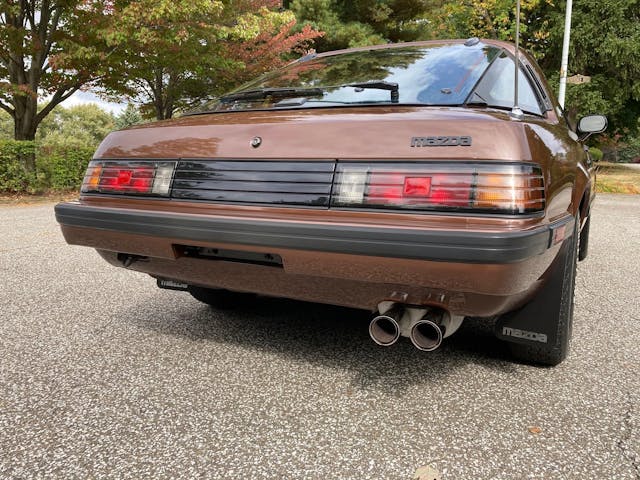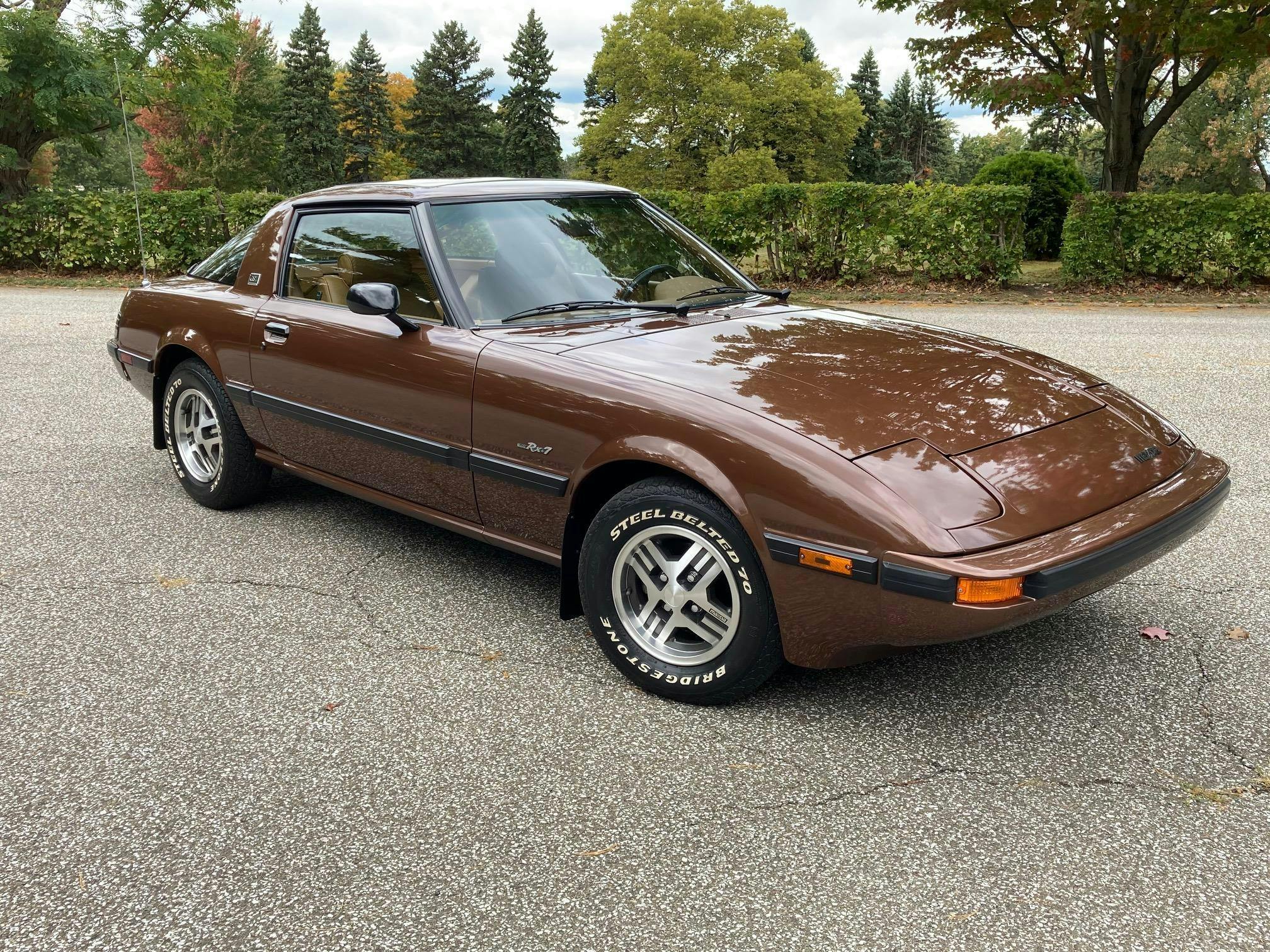Media | Articles
Is $48,000 too much green for Mazda’s brown beauty?
For the price of this 37-year-old brown Mazda, you could be driving a brand-new Toyota Supra. That might seem ridiculous at first glance, but in a few years there’s a non-zero chance that this car could turn into a steal.
What caused this 1983 Mazda RX-7 GSL to sell on Bring a Trailer for $47,775 after fees, nearly double our Concours-condition (#1) value of $25,900?
Simply put, is likely the most original, lowest-mileage first-generation Mazda RX-7 in existence. At least, that’s what the four people who placed bids over $30,000 were betting on.
Collectors will pay incredible sums of money to own a factory-fresh classic. There is a huge difference in value between a fully original car and a restoration, even if both cars look flawless to the eye. For example, earlier this year, a near-perfect 21,000-mile 1971 Datsun 240Z sold for $315,000—triple what factory-restored 240Zs typically sell for. With that in mind, $48,000 for a perfect first-gen RX-7 seems … less absurd.
Much like that record-setting Z, this RX-7 was owned by a dealership for decades. Preservation (and showroom eye candy) was ensured. The car was sold new by John Sisson Motors in Wheeling, West Virginia, in 1983. Then in 1990, after driving it less than 4000 miles in seven years, the original owner sold the RX-7 back to the dealer. Amazed by the condition of the vehicle, the owner of the dealership kept the RX-7 for the next 29 years. Everything is original on this car; even the tires are from the factory.
Marketplace
Buy and sell classics with confidence



Built from 1979–1985, the first-generation Mazda RX-7 (chassis code “FB”) was Mazda’s first true sports car in the RX line. Taking advantage of the compact nature of the Wankel rotary engine, Mazda was able to mount the engine behind the front axle, giving the FB RX-7 near-perfect 50:50 weight distribution and a lower center of gravity. At first, the only engine offered in the FB RX-7 was the 106-horsepower, 1.1-liter 12A twin-rotor. For 1984–1985, the final two years of FB production, top-trim models had the 135-horsepower, fuel-injected, 1.3-liter 13B twin-rotor. The 13B was a lengthened version of the 12A with thicker rotors to increase displacement and went on to be used in all future RX-7s. A 165-horsepower turbocharged 12A was offered in Japan at the same time but was never sold stateside.

The top-of-the-line GSL trim (as optioned here) includes desirable options like four-wheel disc brakes, a limited-slip differential, alloy wheels, and a leather interior. The Havana Brown Metallic over tan leather combo tends to elicit polarized responses, but it is very reminiscent of the time. If the purpose of such a time capsule is to represent what life was like in 1983, a brown sports car pretty much nails that brief.
When looking at past FB RX-7 sales on Bring a Trailer, it’s clear to what degree this sale is an outlier. The previous high-water mark was a 13B-powered 1985 Mazda RX-7 GSL-SE that sold for over $23,000. While a low-mileage 13B could eventually sell for more, collectors might prefer the 12A’s history. It was the first engine built outside western Europe or the U.S. to finish the 24 hours of Le Mans, a race that the legendary four-rotor-powered Mazda 787B would win in 1991.

Even at $48,000, it could be argued this was a good investment. Retro Japanese cars have been on the rise overall in the last several years, and the RX-7 is no exception. In the last three years, the average value for a 1993-2002 Mazda RX-7 FD in Excellent (#2) condition has more than doubled, from $20,600 to $41,100. At that same time, the average value for a 1979-1985 Mazda RX-7 FB in similar condition increased 74 percent from $9700 to $16,800. While the FD RX-7 has started to level off, the FB is still underpriced and increasing in value: up 18 percent in the last year alone.
The market for retro Japanese classics will continue to grow as the younger generations, who tend to prefer these cars, age into their collecting years. Using Hagerty insurance quotes as a sign of buying intent, Gen-X and millennials dominate the FB RX-7 market, providing 36 percent and 34 percent of quotes respectively.
The new buyer won’t drive it—they confirmed as much in the comments section of the listing. For those that contend it’s a shame that this car wasn’t driven and won’t be in the future, consider that Mazda built nearly a half-million FB RX-7s. There are many good drivers to choose from, and thousands endure on the road today. Future generations will be glad at least one such car was preserved in its original condition, and much like the $315,000 240Z, that’s worth a hefty premium.









Is anyone really that stupid
More money than brains
Drove like garbage and drink gas